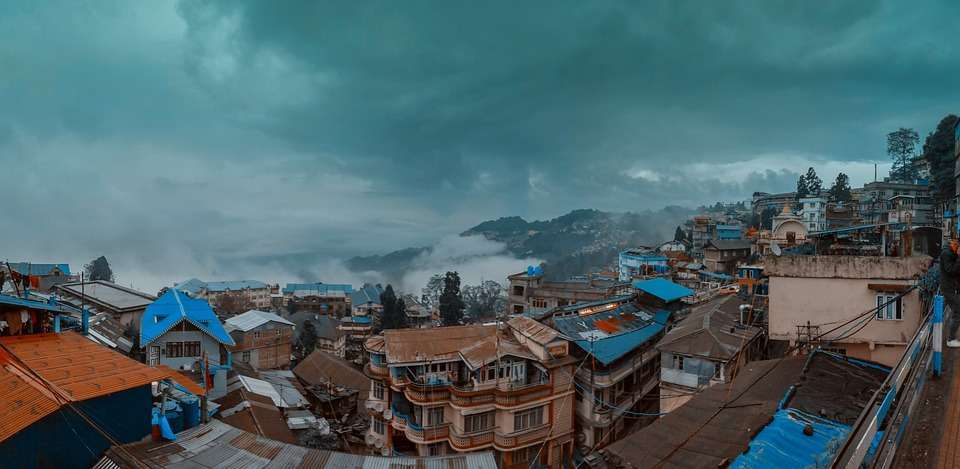Welcome to the mesmerizing world of Darjeeling: A Symphony of Mountains and Tea Gardens
৳8000
per personEmbark on a journey to the picturesque hill station of Darjeeling, where the majestic Himalayan mountains and lush tea gardens await. Witness the breathtaking sunrise at Tiger Hill, explore the colonial charm of the town, and indulge in a tea tasting experience at a renowned tea estate. Ride the famous Darjeeling Himalayan Railway, visit serene gardens, and immerse yourself in the tranquility of this enchanting destination. With its stunning landscapes and rich cultural heritage, a Darjeeling tour promises an unforgettable experience amidst the beauty of the Himalayas.
Darjeeling, nestled in the picturesque hills of West Bengal, is a destination that captivates with its natural beauty, panoramic vistas, and renowned tea gardens. This enchanting town, known as the “Queen of the Himalayas,” offers a perfect blend of scenic landscapes, colonial charm, and a rich cultural heritage.
-
DepartureMain City Square, Old Town
-
Departure TimePlease arrive by 9:15 AM for a prompt departure at 9:30 AM.
-
Return TimeApproximately 8:30 PM.
-
Dress CodeCasual. Comfortable athletic clothing, hiking shoes, hat, light jacket.
-
Include5 Star AccommodationPersonal GuideAirport TransfersBreakfast
-
Not IncludedDeparture TaxesEntry Fees
Day 1: Departure
Day 2: Adventure Beggins
Day 3: Historical Tour
Day 4: Return
Tour Location
Darjeeling is located in the Indian state of West Bengal, in the eastern part of the country. Situated in the foothills of the Eastern Himalayas, it is approximately 2,042 meters (6,700 feet) above sea level. Darjeeling is bordered by Nepal to the west, Bhutan to the east, and the Indian states of Sikkim and Bihar to the north and south respectively. The town itself is nestled amidst rolling hills and offers breathtaking views of the surrounding mountains, including the mighty Kanchenjunga, the third highest peak in the world.
History of the City
The history of Darjeeling is rich and diverse, shaped by various influences over the centuries. Here is an overview of the history of Darjeeling: Early History: The region where Darjeeling is located was originally inhabited by various indigenous tribes. In the 18th century, it was part of the Kingdom of Sikkim, ruled by the Chogyal dynasty. The area was sparsely populated and primarily used as a grazing ground for livestock. British Annexation: In the early 19th century, the British East India Company began expanding its influence in the Indian subcontinent. In 1828, the British obtained the region of Darjeeling from the Kingdom of Sikkim as part of the Treaty of Titalia. The British saw the potential of Darjeeling due to its pleasant climate and began developing it as a hill station and sanatorium. Tea Plantations and Development: In the mid-19th century, the British established tea plantations in Darjeeling, taking advantage of its favorable climate for tea cultivation. The tea industry rapidly grew, and Darjeeling tea became renowned for its distinct flavor and quality, gaining international recognition. Darjeeling Himalayan Railway: To connect Darjeeling with the rest of the region, the Darjeeling Himalayan Railway, also known as the "Toy Train," was constructed in the late 19th century. This narrow-gauge railway, with its unique loop and zigzag tracks, became a UNESCO World Heritage Site and a symbol of Darjeeling's heritage. Gorkhaland Movement: In the late 20th century, there was a movement for the creation of a separate state called Gorkhaland, led by the Gorkha Janmukti Morcha (GJM). The movement sought greater autonomy and recognition for the Gorkha ethnic community. However, the demand for a separate state has not been fulfilled, and the issue remains a topic of discussion and occasional unrest. Present Day: Today, Darjeeling continues to be a popular tourist destination, attracting visitors from around the world with its scenic beauty, tea gardens, and colonial architecture. It remains an important center for tea production, with tea tourism playing a significant role in the local economy. The town's unique blend of British colonial heritage and the indigenous Gorkha culture adds to its distinct charm.Write a Review
You must be logged in to post a comment.



